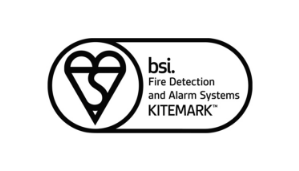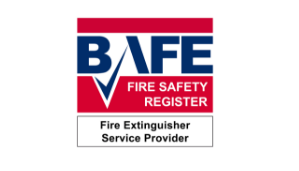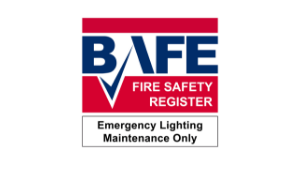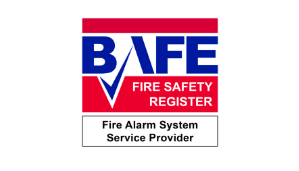Fire doors are often overlooked, yet they are one of the most critical life-saving features in any building. Flames and smoke can spread through a building in just minutes, and without effective fire doors, occupants are left with little time to escape.
Fire doors are one of the most critical life-saving measures in any building. Properly installed and maintained, they can hold back fire and smoke for 30 to 60 minutes, buying precious time for evacuation and emergency response.
This year’s Fire Door Safety Week (22–26 September 2025) is built around the theme “Fire Travels Fast” – a reminder that fire doesn’t wait, and neither should we when it comes to fire door safety.
Shocking Statistics on Fire Door Compliance
Despite their vital role, too many fire doors are failing. The scale of the issue is clear:
- 75% of fire doors fail to meet safety regulations, most often due to poor installation, lack of maintenance, or damage.
- A British Woodworking Federation (BWF) survey found that 53% of UK fire door inspections uncovered problems serious enough to make the door ineffective.
- In residential buildings, 39% of tenants admitted to wedging open fire doors which completely remove their ability to stop the spread of smoke and fire.
- Alarmingly, one in three people don’t know what a fire door is, according to a recent fire safety survey.
- In 2023, UK Fire and Rescue services responded to over 13,000 building fires – many in properties with non-compliant fire safety measures.
These figures highlight a stark reality: too many fire doors are failing, leaving occupants exposed and creating a dangerous illusion of safety. This, coupled with the fact that fire spreads faster than most people realise, creates a massive gap in fire safety that could cost lives.
What Makes a Fire Door Effective?
A fire door is more than just a heavy door. Its effectiveness depends on key features working together:
- Fit and Alignment: Doors must sit snugly against the frame with minimal gaps.
- Intumescent Seals: Special seals expand under heat, stopping smoke and fire from seeping through.
- Self-Closing Devices: Fire doors must close automatically – without this, their purpose is defeated.
Even the best-manufactured fire door is useless if it’s damaged, wedged open, or missing vital components.
Common Fire Door Compliance Failures
Recent studies, including those published by the International Fire and Safety Journal, show the most widespread issues include:
- Lack of education: Occupants, especially in multi-occupancy settings like student accommodation and care homes often don’t understand why fire doors matter.
- Maintenance gaps: Without regular inspections, wear and tear can silently undermine a door’s performance.
The Role of Regular Inspections
Fire doors endure constant use, meaning wear is inevitable. Routine inspections are the only way to guarantee they remain compliant and effective.
At CDS, we recommend inspections at least every six months, ensuring seals, hinges, closers, and certification remain intact. Any issues found should be resolved immediately – because in a fire, even the smallest fault could cost lives.
How Technology Transforms Fire Door Safety
Traditional inspections are essential, but technology is helping building managers stay ahead of fire risks more effectively. CDS’ sister company, Drax Technology, has developed a fire door asset management solution designed to simplify compliance and create total visibility.
Here’s how it helps:
- Annual Inspections Built for Compliance – A structured framework ensuring every fire door meets regulatory standards.
- Asset Tagging & SafeVue Integration – Each door is logged into Drax’s SafeVue software for a complete, accessible record.
- RAG Reporting System – A clear Red-Amber-Green status highlights urgent issues, supports budgeting, and speeds up repairs.
- Interim Inspections by Site Teams – Staff can carry out quick, guided checks between annual inspections.
- Automated Notifications – SafeVue prompts quarterly inspections, so compliance isn’t forgotten.
Simple Steps to Ensure Compliance
Building managers and landlords can take straightforward steps to improve fire door safety:
- Schedule regular inspections with qualified professionals.
- Educate building occupants on correct usage, especially the dangers of wedging doors open.
- Repair issues immediately, no matter how small they may seem.
The 5-Step Fire Door Check
Everyone can play a role in fire door safety. The 5-Step Fire Door Check is a quick way to spot potential issues:
1) Certification – Look for a label or mark from an official body such as the BWF.
2) Gaps – Gaps around the door should be no more than 4mm.
3) Seals & Hinges – Ensure seals are intact and hinges are secure with all screws present.
4) Door Closer – The door should close fully on its own without sticking or slamming.
5) No Obstructions – Never wedge or prop fire doors open.
Make Fire Door Safety a Priority
Fire doors save lives but only if they work, and the theme of Fire Door Safety Week says it all: “Fire Travels Fast.” Once fire takes hold, it can rip through a building in minutes and the only way to stop it is with working, compliant fire doors. This Fire Door Safety Week, we urge building managers, landlords, and tenants to look beyond assumptions and take real action.
At CDS, we’re committed to supporting organisations with inspections, maintenance, and education to ensure every fire door is fit for purpose. Contact us today to schedule your next fire door inspection and take the first step toward eliminating a false sense of safety in your building.


















